For the past three years, I’ve been working on a Ponderosa pine with large branches on the upper half of the trunk. I spent the first two years getting the tree healthy enough to work on and I lightly pruned and repotted it last year. The tree responded well and is now ready for styling.
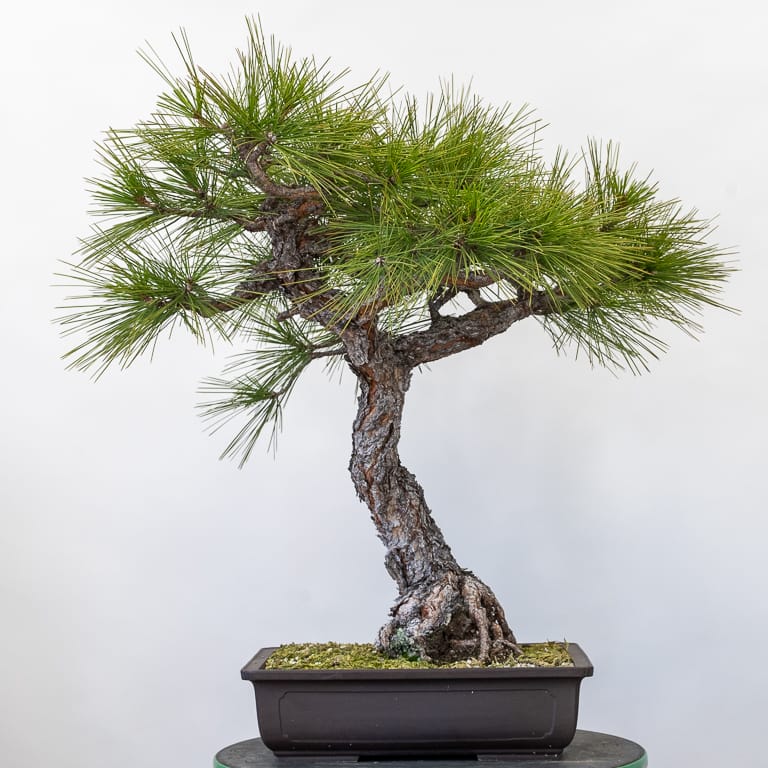
Ponderosa pine
That said, this might be a Jeffrey pine. I don’t know the tree’s history so I don’t know where it was collected or whether it is a Jeffrey pine or a Ponderosa. Since most of the collected pines I’ve seen with similar characteristics are Ponderosas, I’m going with that for now.
When I first acquired the tree I planned to lower the first branch on the right. I like it when pine branches grow at descending angles as this suggests the branch angles of old pines.
When I sat down to work on the tree, I found the first branch to be too large and too straight to use so I removed it.
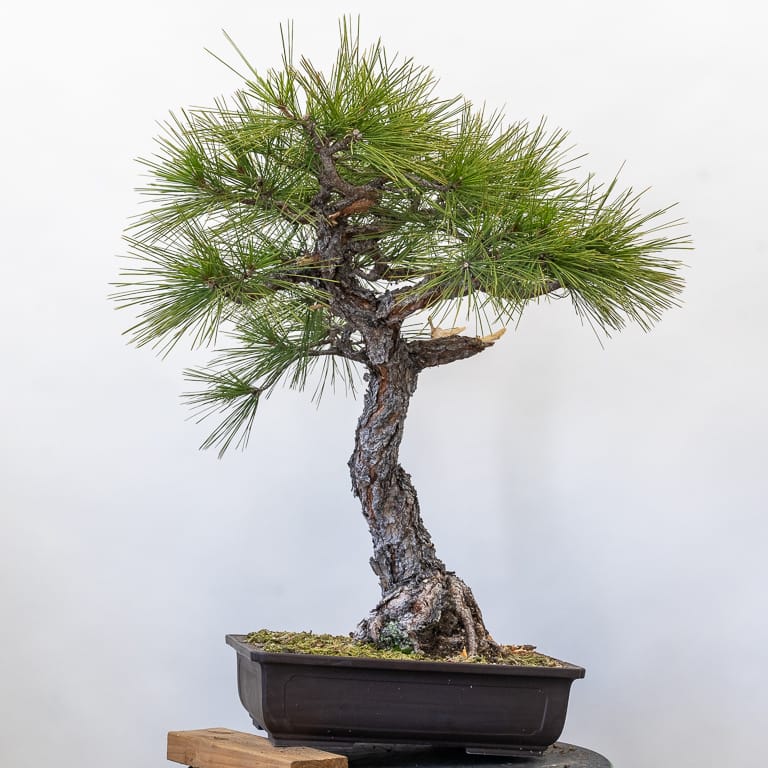
After removing the first branch
With the largest branch out of the way, I tested different planting angles and fronts.
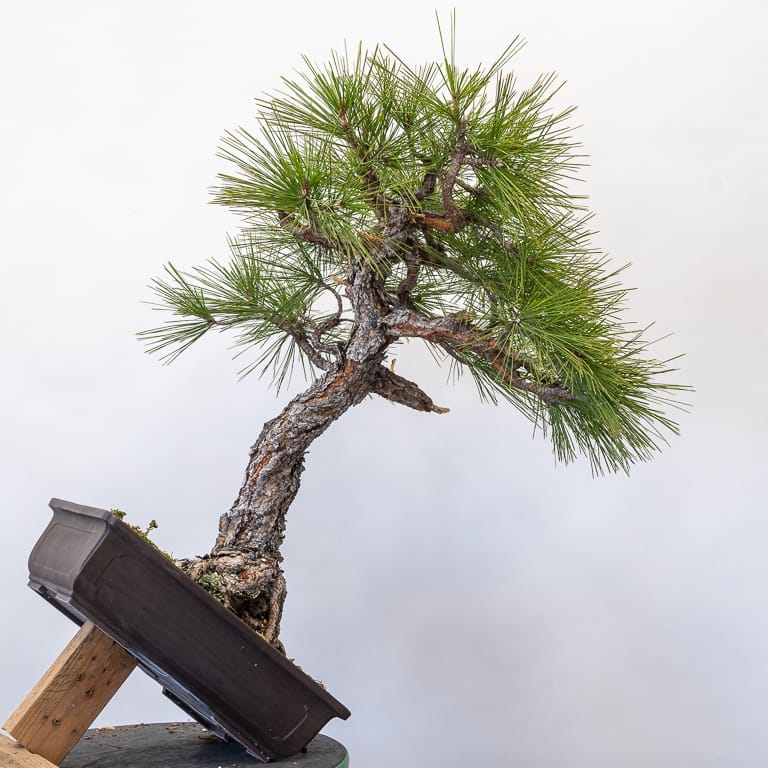
Testing a different planting angle
Eventually I settled on a similar front with a slightly modified planting angle. I expect this will change a little over time, but it’s a good starting point for the initial branch work.
After deciding on the planting angle, I found the next biggest branch on the tree to be too big so I removed it.
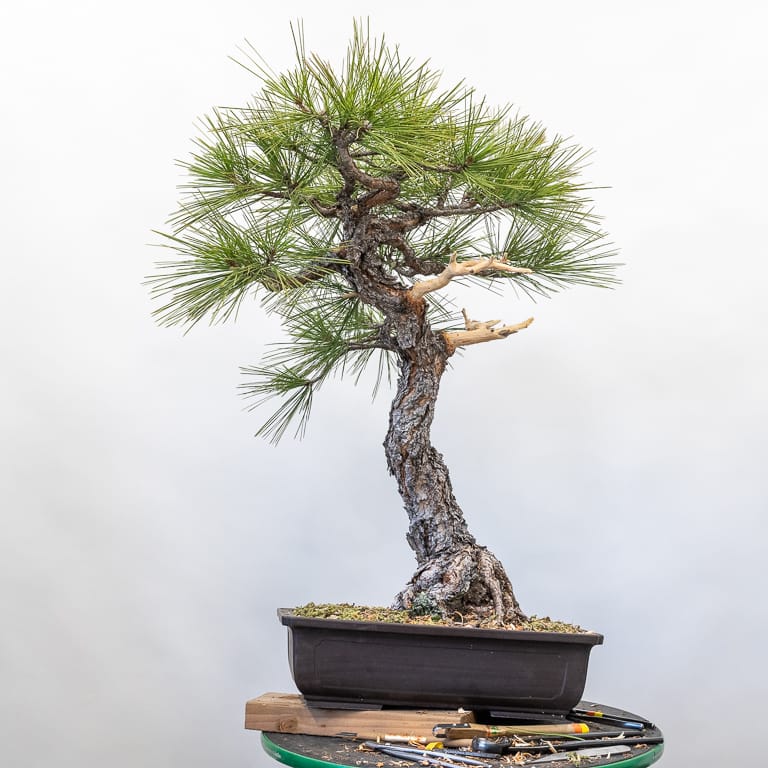
After removing the two large branches on the right
I kept the first 8″-10″ of these branches for deadwood features and will treat them with lime sulfur after they dry out in a few months.
From a design perspective, there were two main reasons for making these cuts. The first is that the movement of the trunk is to the left and the big branches both grew to the right which suggests movement in the opposite direction. The second reason is that the branches lacked movement and were too long to fit into the silhouette I had in mind for the tree.
With those branches out of the way, the next step was to wire and set the remaining branches.
Here’s one option for the future front.
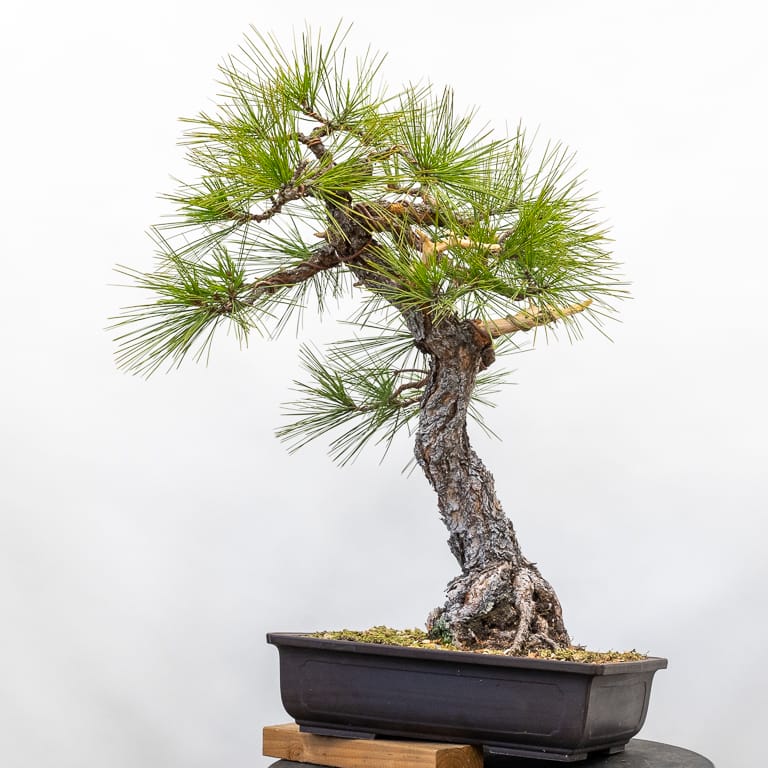
Option 1
I like the movement from this front but the branches don’t make as much sense from this angle. By rotating the tree slightly I can offer a better view of the trunk.
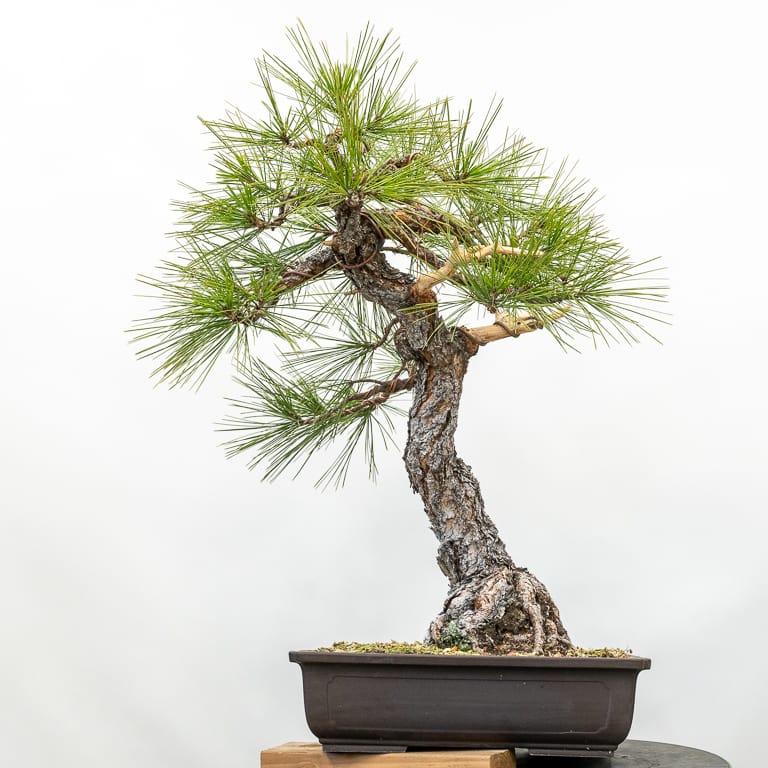
Option 2 – 31″ tall
Although it’s easy to see the future silhouette with such long needles, the next step is to improve the branch density. By looking at the before and after photos from the left side, it’s easy to see where the tree needs to fill in.
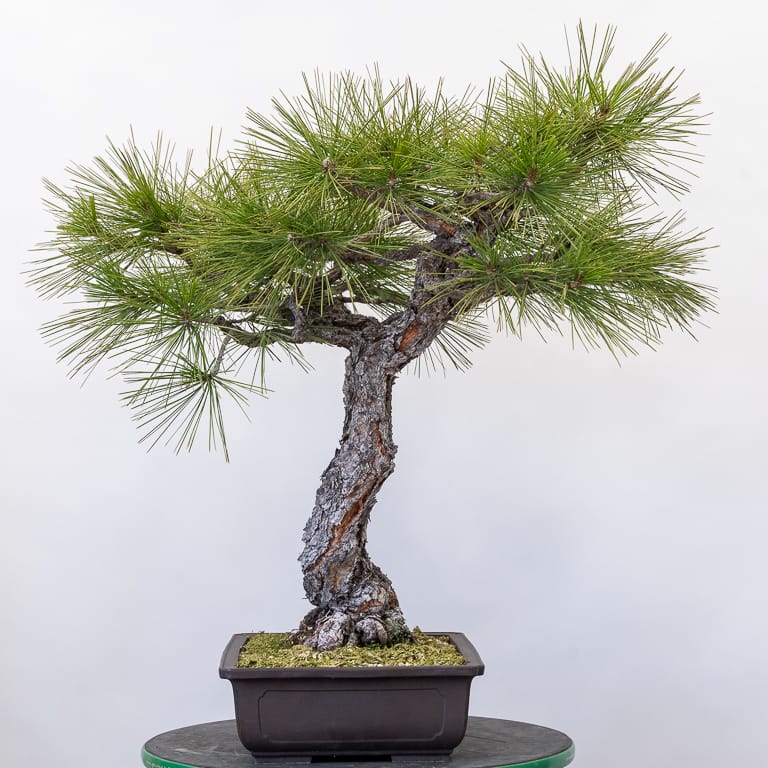
Left side before pruning
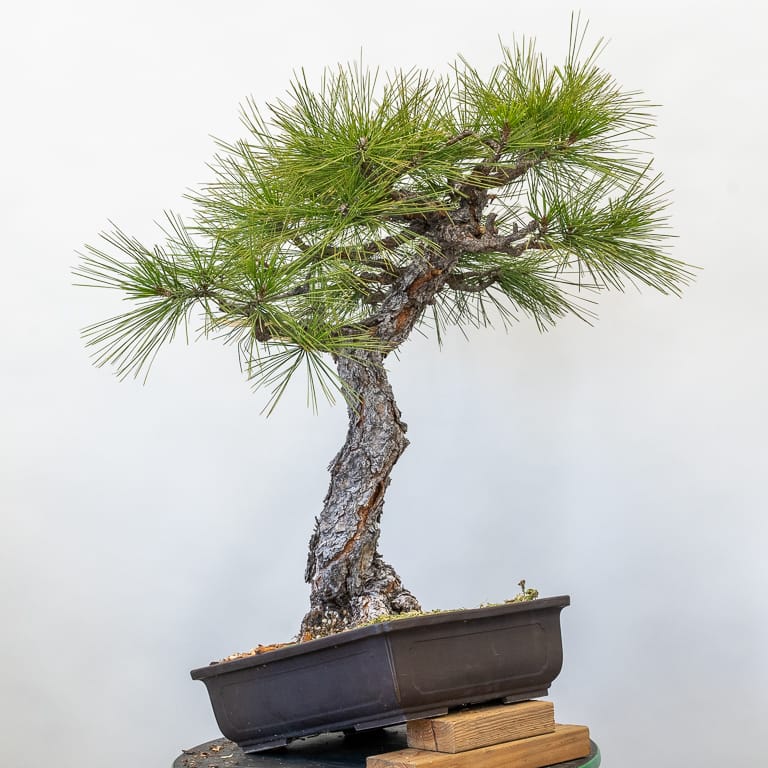
Left side after removing the heavy branches
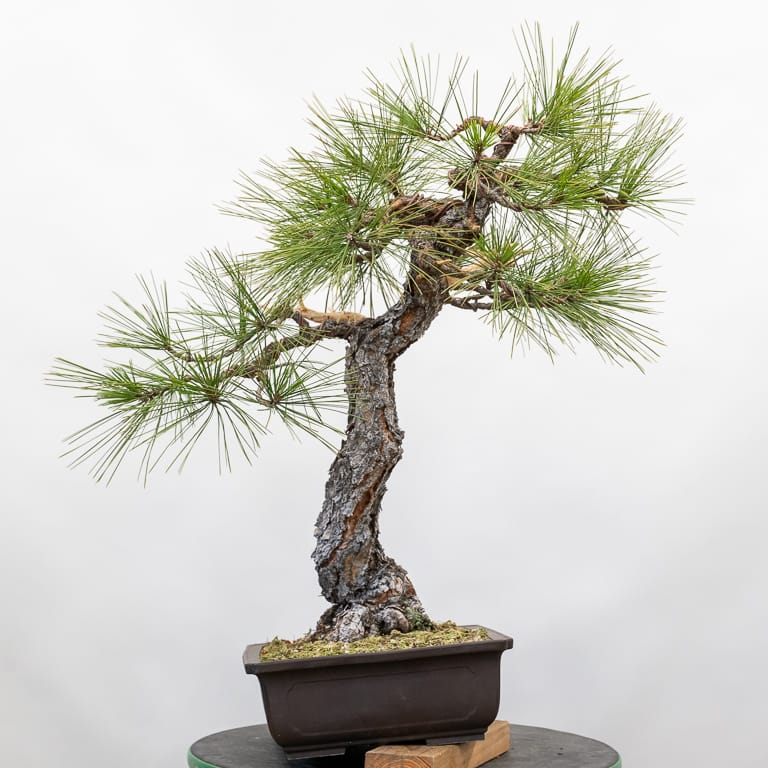
Left side after wiring
I plan to let the tree grow for one or two years before repotting at the new potting angle. In the meantime, I’ll switch the focus to increasing the branch density.
Subscribe to Bonsai Tonight
New Posts Delivered Every Tuesday and Friday
Bob Steig says
While I’ve admittedly only seen perhaps 5 Ponderosa and zero Jeffrey pines, the bark of your tree doesn’t seem to exhibit the ‘elephant rolls’ (or perhaps ‘molten lava’ appearance that I observe on my Ponderosa and the others I’ve seen.
The growth habit and needles do look right however.
It’s certainly a robust tree and I agree with your decision to Jin the two thick branches. That lightened the overall feel plus added character
Thanks for sharing
Jonas Dupuich says
Thanks, Bob! I know what you mean about the character of the growth habit. I’ve found that Ponderosa from different parts of the country (CA vs. CO or SD) have different characteristics so that could be part of it. It could also be a hybrid. And if not, it could be a Jeffrey with uncommonly short needles!
TPeterson says
I have a collected Jeffery pine that had 2” long needles when collected in the Sierra Nevada’s, unfortunately once I got the tree healthy after collection the needles extended to over 4” now I’m hopeful to bring the size back down (a memorable lesson for collecting). All that to say under the right conditions Jeffery pine needles can get quite short!
Jonas Dupuich says
Good to know – it’ll be fun to see what it takes to get the needles under 3″ again!
Jay says
Have you tried the sniff test?
I’m not sure about Jeffrey pines, but Ponderosa pines have an incredible, butterscotchy, sweet smell to them between the cracks of the bark.
Jonas Dupuich says
I have – the tree has a great pine smell but not the butterscotch I’ve picked up from the bark of large forest specimens.
Patricia D O'Connor says
This was very insightfull, Thank you. I love the bark texture of the Ponderosas and yes without pinecones to look at, it can be hard to see the difference between the two tree varieties.
Jonas Dupuich says
Thanks, Patricia!
jean-yves Guilard says
quand j’ai vue la première photo ,je me suis dit ,cette grosse branche a droite est en trop !!!, maintenant ,je le trouve plus dynamique ,il a un belle avenir
Jonas Dupuich says
Ha, that’s great – thanks Jean-Yves!
Lani says
I like the “left side after wiring “ picture the best because it shows all of the twists in the trunk. Love the orange cracks in the bark! Lovely tree.
Jonas Dupuich says
Thanks, Lani! It’s not a bad view of the trunk from the left – I may take advantage of that sometime.